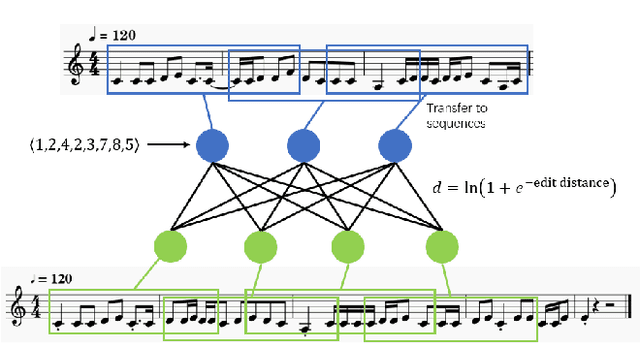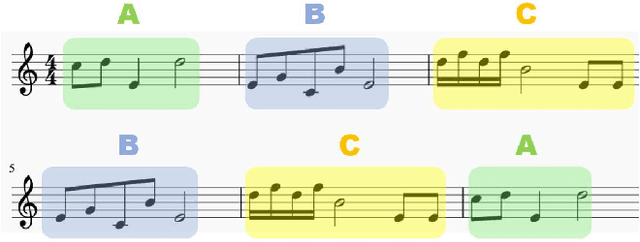Tianyao He
MinerU2.5: A Decoupled Vision-Language Model for Efficient High-Resolution Document Parsing
Sep 26, 2025Abstract:We introduce MinerU2.5, a 1.2B-parameter document parsing vision-language model that achieves state-of-the-art recognition accuracy while maintaining exceptional computational efficiency. Our approach employs a coarse-to-fine, two-stage parsing strategy that decouples global layout analysis from local content recognition. In the first stage, the model performs efficient layout analysis on downsampled images to identify structural elements, circumventing the computational overhead of processing high-resolution inputs. In the second stage, guided by the global layout, it performs targeted content recognition on native-resolution crops extracted from the original image, preserving fine-grained details in dense text, complex formulas, and tables. To support this strategy, we developed a comprehensive data engine that generates diverse, large-scale training corpora for both pretraining and fine-tuning. Ultimately, MinerU2.5 demonstrates strong document parsing ability, achieving state-of-the-art performance on multiple benchmarks, surpassing both general-purpose and domain-specific models across various recognition tasks, while maintaining significantly lower computational overhead.
Enhancing Video Large Language Models with Structured Multi-Video Collaborative Reasoning (early version)
Sep 16, 2025Abstract:Despite the prosperity of the video language model, the current pursuit of comprehensive video reasoning is thwarted by the inherent spatio-temporal incompleteness within individual videos, resulting in hallucinations and inaccuracies. A promising solution is to augment the reasoning performance with multiple related videos. However, video tokens are numerous and contain redundant information, so directly feeding the relevant video data into a large language model to enhance responses could be counterproductive. To address this challenge, we propose a multi-video collaborative framework for video language models. For efficient and flexible video representation, we establish a Video Structuring Module to represent the video's knowledge as a spatio-temporal graph. Based on the structured video representation, we design the Graph Fusion Module to fuse the structured knowledge and valuable information from related videos into the augmented graph node tokens. Finally, we construct an elaborate multi-video structured prompt to integrate the graph, visual, and textual tokens as the input to the large language model. Extensive experiments substantiate the effectiveness of our framework, showcasing its potential as a promising avenue for advancing video language models.
MECD+: Unlocking Event-Level Causal Graph Discovery for Video Reasoning
Jan 16, 2025



Abstract:Video causal reasoning aims to achieve a high-level understanding of videos from a causal perspective. However, it exhibits limitations in its scope, primarily executed in a question-answering paradigm and focusing on brief video segments containing isolated events and basic causal relations, lacking comprehensive and structured causality analysis for videos with multiple interconnected events. To fill this gap, we introduce a new task and dataset, Multi-Event Causal Discovery (MECD). It aims to uncover the causal relations between events distributed chronologically across long videos. Given visual segments and textual descriptions of events, MECD identifies the causal associations between these events to derive a comprehensive and structured event-level video causal graph explaining why and how the result event occurred. To address the challenges of MECD, we devise a novel framework inspired by the Granger Causality method, incorporating an efficient mask-based event prediction model to perform an Event Granger Test. It estimates causality by comparing the predicted result event when premise events are masked versus unmasked. Furthermore, we integrate causal inference techniques such as front-door adjustment and counterfactual inference to mitigate challenges in MECD like causality confounding and illusory causality. Additionally, context chain reasoning is introduced to conduct more robust and generalized reasoning. Experiments validate the effectiveness of our framework in reasoning complete causal relations, outperforming GPT-4o and VideoChat2 by 5.77% and 2.70%, respectively. Further experiments demonstrate that causal relation graphs can also contribute to downstream video understanding tasks such as video question answering and video event prediction.
DynamicFace: High-Quality and Consistent Video Face Swapping using Composable 3D Facial Priors
Jan 15, 2025



Abstract:Face swapping transfers the identity of a source face to a target face while retaining the attributes like expression, pose, hair, and background of the target face. Advanced face swapping methods have achieved attractive results. However, these methods often inadvertently transfer identity information from the target face, compromising expression-related details and accurate identity. We propose a novel method DynamicFace that leverages the power of diffusion model and plug-and-play temporal layers for video face swapping. First, we introduce four fine-grained face conditions using 3D facial priors. All conditions are designed to be disentangled from each other for precise and unique control. Then, we adopt Face Former and ReferenceNet for high-level and detailed identity injection. Through experiments on the FF++ dataset, we demonstrate that our method achieves state-of-the-art results in face swapping, showcasing superior image quality, identity preservation, and expression accuracy. Besides, our method could be easily transferred to video domain with temporal attention layer. Our code and results will be available on the project page: https://dynamic-face.github.io/
MECD: Unlocking Multi-Event Causal Discovery in Video Reasoning
Sep 26, 2024



Abstract:Video causal reasoning aims to achieve a high-level understanding of video content from a causal perspective. However, current video reasoning tasks are limited in scope, primarily executed in a question-answering paradigm and focusing on short videos containing only a single event and simple causal relationships, lacking comprehensive and structured causality analysis for videos with multiple events. To fill this gap, we introduce a new task and dataset, Multi-Event Causal Discovery (MECD). It aims to uncover the causal relationships between events distributed chronologically across long videos. Given visual segments and textual descriptions of events, MECD requires identifying the causal associations between these events to derive a comprehensive, structured event-level video causal diagram explaining why and how the final result event occurred. To address MECD, we devise a novel framework inspired by the Granger Causality method, using an efficient mask-based event prediction model to perform an Event Granger Test, which estimates causality by comparing the predicted result event when premise events are masked versus unmasked. Furthermore, we integrate causal inference techniques such as front-door adjustment and counterfactual inference to address challenges in MECD like causality confounding and illusory causality. Experiments validate the effectiveness of our framework in providing causal relationships in multi-event videos, outperforming GPT-4o and VideoLLaVA by 5.7% and 4.1%, respectively.
Collaborative Weakly Supervised Video Correlation Learning for Procedure-Aware Instructional Video Analysis
Dec 18, 2023



Abstract:Video Correlation Learning (VCL), which aims to analyze the relationships between videos, has been widely studied and applied in various general video tasks. However, applying VCL to instructional videos is still quite challenging due to their intrinsic procedural temporal structure. Specifically, procedural knowledge is critical for accurate correlation analyses on instructional videos. Nevertheless, current procedure-learning methods heavily rely on step-level annotations, which are costly and not scalable. To address this problem, we introduce a weakly supervised framework called Collaborative Procedure Alignment (CPA) for procedure-aware correlation learning on instructional videos. Our framework comprises two core modules: collaborative step mining and frame-to-step alignment. The collaborative step mining module enables simultaneous and consistent step segmentation for paired videos, leveraging the semantic and temporal similarity between frames. Based on the identified steps, the frame-to-step alignment module performs alignment between the frames and steps across videos. The alignment result serves as a measurement of the correlation distance between two videos. We instantiate our framework in two distinct instructional video tasks: sequence verification and action quality assessment. Extensive experiments validate the effectiveness of our approach in providing accurate and interpretable correlation analyses for instructional videos.
Music Plagiarism Detection via Bipartite Graph Matching
Jul 21, 2021



Abstract:Nowadays, with the prevalence of social media and music creation tools, musical pieces are spreading much quickly, and music creation is getting much easier. The increasing number of musical pieces have made the problem of music plagiarism prominent. There is an urgent need for a tool that can detect music plagiarism automatically. Researchers have proposed various methods to extract low-level and high-level features of music and compute their similarities. However, low-level features such as cepstrum coefficients have weak relation with the copyright protection of musical pieces. Existing algorithms considering high-level features fail to detect the case in which two musical pieces are not quite similar overall, but have some highly similar regions. This paper proposes a new method named MESMF, which innovatively converts the music plagiarism detection problem into the bipartite graph matching task. It can be solved via the maximum weight matching and edit distances model. We design several kinds of melody representations and the similarity computation methods according to the music theory. The proposed method can deal with the shift, swapping, transposition, and tempo variance problems in music plagiarism. It can also effectively pick out the local similar regions from two musical pieces with relatively low global similarity. We collect a new music plagiarism dataset from real legally-judged music plagiarism cases and conduct detailed ablation studies. Experimental results prove the excellent performance of the proposed algorithm. The source code and our dataset are available at https://anonymous.4open.science/r/a41b8fb4-64cf-4190-a1e1-09b7499a15f5/
 Add to Chrome
Add to Chrome Add to Firefox
Add to Firefox Add to Edge
Add to Edge